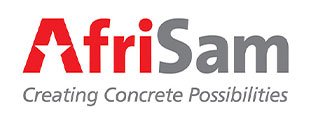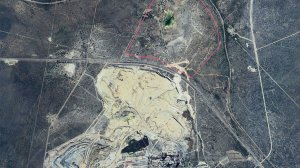

AfriSam expects to start mining new Ulco limestone quarry later this year



The existing Ulco operation and new mining area
AfriSam Cementitious executive Hannes Meyer
Aggregates and construction materials company AfriSam will soon start mining at a new limestone deposit near its Ulco cement plant, in the Northern Cape.
The relocated quarry will be capable of providing security of supply for about 40 years and will deliver about two-million tons of limestone a year to Ulco.
“Mining is expected to begin in the second half of 2024, with an unusual topography in which the quarry will be mined into an escarpment,” says AfriSam Cementitious executive Hannes Meyer.
“Transportation of mined material is, therefore, mainly downhill. With the gradient of the haul road slopes limited to 5°, AfriSam’s truck-trailer combinations have been designed to be much more energy efficient than conventional off-road dump trucks,” he points out.
After several wide-spaced prospecting campaigns and close-spaced drilling across 100 ha, the company identified the best limestone reserves on its mining right on the opposite side of the R31 national road, which runs between the new site and the plant, says AfriSam Saldanha and strategic projects manager Gavin Venter.
“This means it is necessary to construct tunnels under the road to facilitate safe access between the new quarry site and the existing plant. Adding to the complexity is the large Gamagara water pipeline, which runs parallel to the road.”
The R31 road between Kimberley and Postmasburg carries high volumes of large ore trucks and abnormal load mining equipment. It will be diverted in early 2024 to accommodate this traffic for about six months while extensive excavation and civil engineering work is undertaken to build the tunnel underpass system.
“To comply with the road authority’s requirements, the tunnels will traverse the full 32 m width of the road reserve to allow for future road widening, in addition to the pipeline servitude. The two tunnels themselves will be more than 50 m in length, and will be separated to enhance safety because there will be counterflow traffic to and from the plant,” he explains.
The 5-m-high by 5-m-wide tunnels will be excavated to 12 m below the R31 road level and constructed as large culverts with steel-reinforced concrete.
The design work ensured a tunnel alignment to suit the future possibility of an in-pit crusher and conveyor belt. If such an option was financially justified in future, it would provide an alternative method to feed crushed material to the existing pre-blending stockpiles, Venter notes.
Work on the pipe bridge began in late 2022 and excavation work began in the third quarter of 2023, creating the initial slot on the south side of the R31. Once the road is diverted, the excavation of the tunnels can begin and is expected to be completed by the end of February. This will be followed by the construction of the two tunnels.
The civils works also accommodated the 700-mm-diameter Gamagara pipeline, which supplies the Northern Cape with water from the Vaal river. To avoid the risk of disrupting this water supply, a concrete bridge has been built parallel to the existing pipeline, inside which a new 100 m stretch of pipeline was laid, he says.
“This provided the necessary support for the pipeline so that excavation and controlled blasting can be conducted underneath. As a further precaution, there is also a 100 mm per second vibration limit applied to any blasting activity around the pipeline bridge,” he adds.
The supply of readymix, which will include AfriSam cement, will come from Kimberley, which is about 80 km south.
“With ambient daytime temperatures that can rise to 40 °C, this will require careful use of admixtures to achieve the required slump by the time the readymix trucks arrive on site,” Venter says.
AfriSam commissioned various specialist studies as part of its environmental impact assessment to investigate the new quarry’s potential effects on wetlands, terrestrial life, hydrology, heritage and traffic.
Authorisation was granted to mine in the vicinity of water features on the proposed mining area, with a seasonal drainage line that had to be diverted to avoid the exit slot of the new haul road, he notes.



